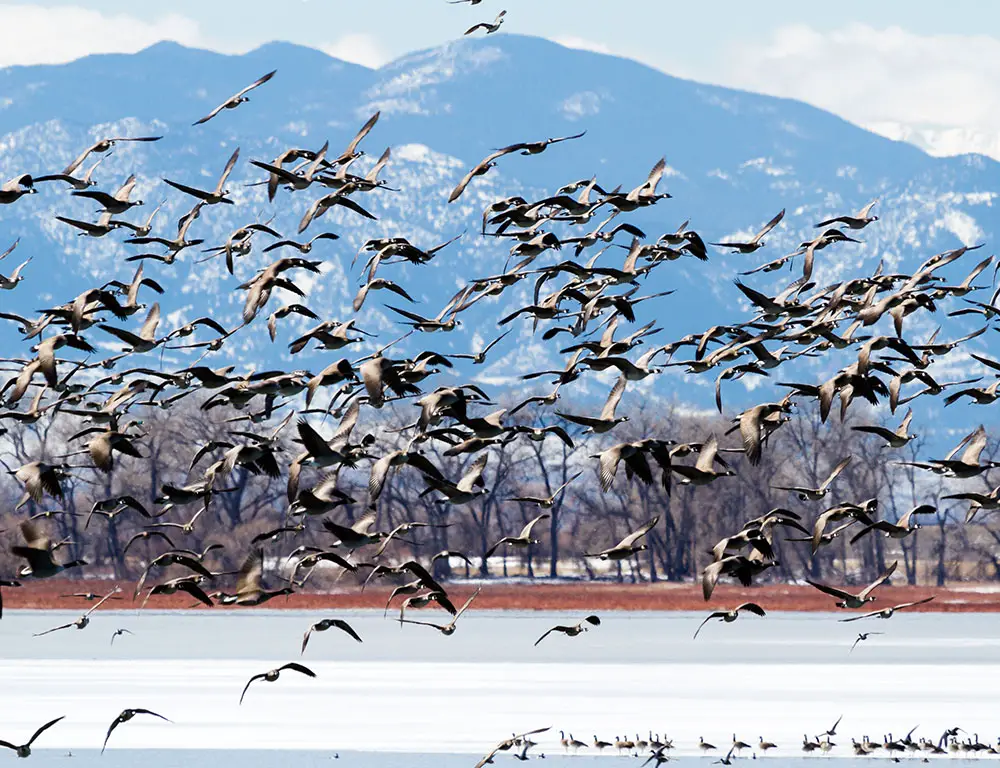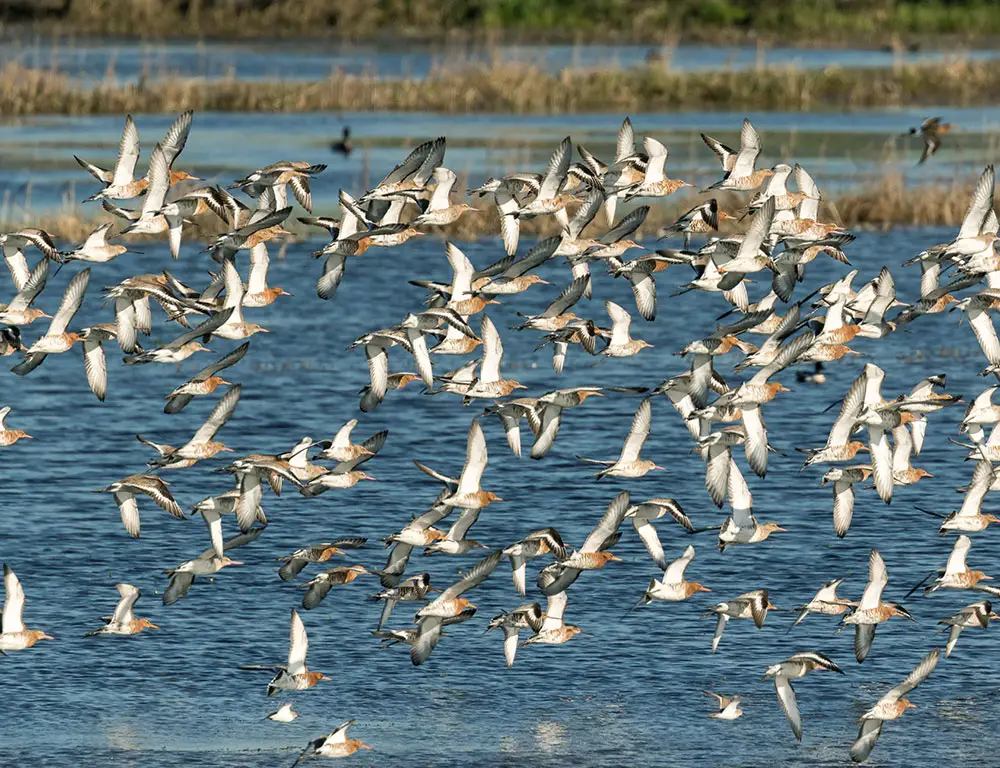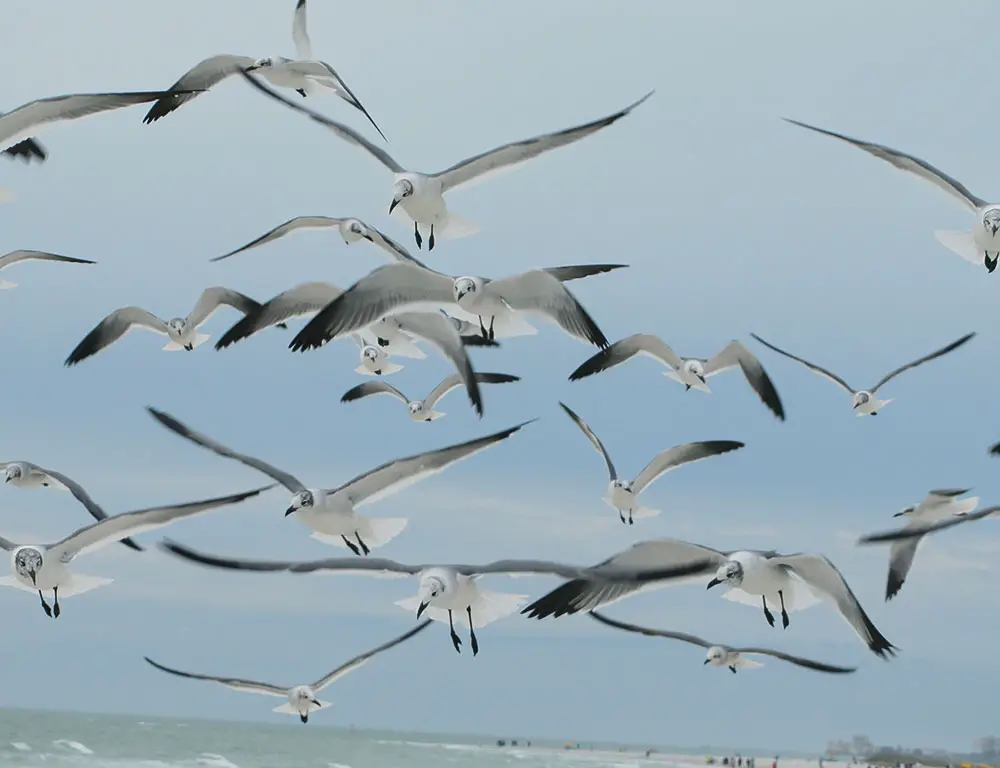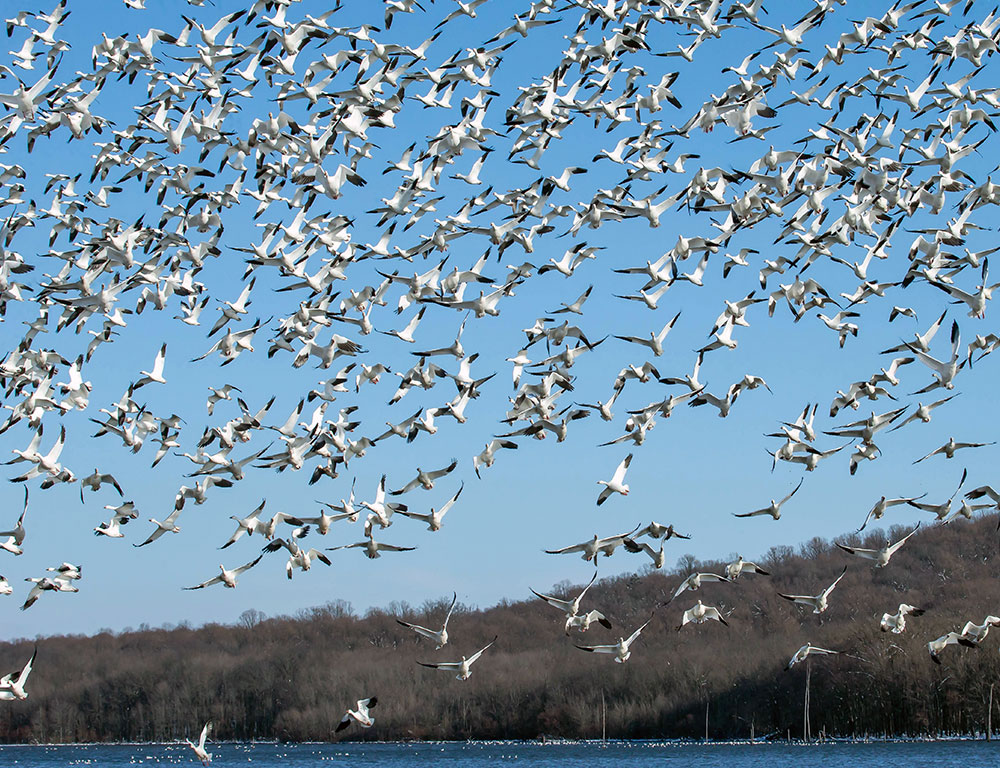The migratory birds travel around 16,000 miles during seasonal changes. With an average speed of 30mph, they fly over 530 hours throughout the journey. It takes them over 2 months to reach the south for winter.
But why do birds fly south for winter? What elevates their motivation? The answer to that is food and shelter.
During the winter, the insects, plants, and other resources a bird needs to survive start declining. As a matter of survival, they move to a warmer place with adequate food.
Some other reasons may include adjusting capability with freezing cold and habituation factors. Let’s take an in-depth look to find out why do birds fly south for winter.

Why do Birds Fly South for Winter?
Birds predominantly fly south in search of adequate food and shelter. Migratory birds often find the weather and habitual change tough to adjust to, which is why it becomes a matter of survival for them. In other parts of the world, food is insufficient for migratory birds.
On the other hand, the weather is most suitable in the southern parts, which is why birds fly south during winter. Overall, in search of a safe and decent life, they fly south during the period of winter.
Let’s look into them in detail below!
Birds Flying South for a Matter of Survival
During the winter, the freezing temperature of the ponds and lakes leads to a negative impact on migratory birds’ habitats. The temperature near the birds’ residence increases severely, making it tough to survive.
Moreover, it becomes tough to travel and communicate with migratory birds during the lowest temperatures. This is the reason they start their journey two months before winter.
Overall, the birds fly south for survival and a quest for a healthier life. And the South provides adequate food and warmth for the birds during that period.
Birds Flying South for Habitual Change
Not all birds can survive in a habitual change. Some birds can blend in with different weathers and some birds find it difficult. It is a matter of the genetics of the birds they are born with. Habitual change is a major factor for migratory birds. This affects their living standard, health, and also lifespan.
Habitual change does not only affect the birds but their overall living experience. The demotion in the living experience affects their lifespan severely when they fail to migrate during winter. At times it may lead to death.
Birds Flying South for Adequate Food
This is the predominant reason behind birds flying to the south during winter. The ultimate source of food for birds includes plant materials, nuts, berries, and insects similar to worms. It is impossible to survive during winter for migratory birds without this food source.
When it comes to the larger birds they can obtain their needs from fish, animals, and many other resources that are available in winter. However, it is the small migratory birds that suffer the most.
Therefore, the safest option for them is to go for migration with proper preparation. Even though at times it becomes risky for the birds to migrate, it is their only way to survive through winter.
What Risks do Birds Face During Migration?

During the months of winter, birds face numerous challenges in their migration. They fly 8 hours a day during this period and face these risks-
Starvation
To stay full of energy birds rely on a few food resources that may include peanuts, sunflower seeds, suet, and mealworms. These foods help the birds to maintain their speed and survive the migration procedure until the end.
Tiredness
High degrees of stress and physical tiredness might result from migration. Additionally, birds are more vulnerable to predators during migration.
Diseases
Because they fly in large numbers, they are more likely to contract viruses and parasites and spread them to their communities.
Luckily, migrating birds can fly more effortlessly in high-pressure, congested areas. As a result, when a high-pressure storm approaches the area, geese may soar high. Fairweather and high-pressure systems are related.
Where Exactly do Birds Go During Winter?

To thrive in winter, birds mostly move to the southern and central parts of America. On the other hand, many birds also choose various African nations to survive winter too.
The migration selection completely depends on the habitual choice of the birds. It depends on the climate, food choice, and temperature.
Birds are often found in birdhouses, abandoned buildings, and chimneys during winter. When it is cold, even in migratory countries, birds take shelter in such places.
However, for birds of all kinds, countries near the Caribbean is the ideal place. Statistics say Ecuador is the most popular place for the birds that migrate during winter because of its versatility in food and warmth in weather.
How do Birds Understand that Winter is Coming?

For the birds, a simple way to indicate the arrival of winter is enduring longer nights and shorter days. On the other hand, subtle temperature changes in the air affect the birds highly in terms of taking flight and shelter.
Recent research also stated that many birds are born with an internal barometer to predict the arrival of winter.
Conclusion
Although it is troublesome and risky, the reason why birds fly south for winter is that it is obligatory for them. It is a matter of survival and maintaining their lifespan.
Food and shelter are two of the necessities for all living being and these are the ultimate reasons behind birds flying south during winter.
Some birds are gifted to blend in with the habitual change, while others are not. Overall, supporting bird migration and protecting them can be a great initiative to take!